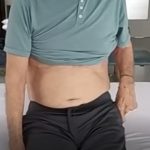Sorry, this entry is only available in European Spanish and Catalan.
(Español) Buscamos fisioterapeuta
(Español) Heminegligencia
(Español) Rehabilitarse cocinando
(Español) Consciencia corporal como base para mejorar postura y movimiento
(Español) La importancia de la Neurodinámica
(Español) Entrenamiento de las habilidades sociales tras el daño cerebral adquirido
stroke, more than an arm paralisis
A person with a stroke not only has paralysis in one arm or one leg, motor involvement is observed in the entire half of the body, including the trunk.
Stroke as the main cerebrovascular disease
Stroke is one of the most disabling cerebrovascular diseases in the adult population. The resulting disability, dominated by sensory and motor disorders, represents a serious problem in the social health system. People with stroke often require long-term medical care and rehabilitation to cope with stroke-related disorders and post-stroke disorders.
Sequelae of stroke in the trunk
Of the possible disorders, a large part are sensory and motor in nature, mainly affecting the half of the body contralateral to the brain injury. Examples of disorders are spasticity, paralysis, hypotonia, and paresthesia, among others.
The affected half of the body includes not only the upper and lower limbs, but also trunk function. Trunk function, which can be affected after a stroke, is closely related to balance and gait. Scientific studies reveal the association between trunk performance and the ability to maintain balance while sitting, standing and even walking. On the other hand, greater impairment of trunk function is a factor for a worse functional prognosis in stroke survivors.
Core exercises for stroke survivors
Knowing this association between the trunk and the function of the arms and legs, lumbopelvic stability or Core-stability exercises should be included in physiotherapy and rehabilitation sessions for stroke survivors. Core-stability exercises can be adapted to the needs and abilities of the patient, they do not require large material resources and are therefore a good resource to do at home.
